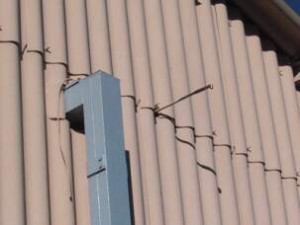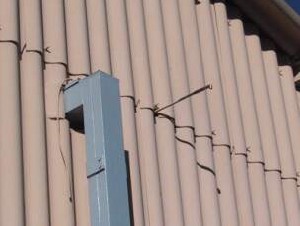At a steel factory, a small ammonia (NH3) leak was observed during the day on a tap valve fitting (inner tap diam.: 8 mm) of a pipe connecting storage tanks in the hydrogen production unit. This gas was being used for the atmosphere of the plant’s annealing furnaces. A repair of the fitting located 3 m aboveground had been scheduled for the next day. During the night-time work shift, technicians detected the leak and notified the onsite production manager, who accompanied by a mechanic and equipped with self-breathing masks were tightening the fitting when it broke, causing an estimated 150-kg discharge over a roughly 10-minute period. The night watchman sounded the alarm siren. The production manager ceased the transfer of liquid NH3 using the manual valves located near the storage tanks, some 100 m from the leak. The emergency shutdown protocol was activated, which in turn sectioned the pipeline. Fire-fighters and the closest neighbours were notified.
The factory’s internal response team were able to restrict cloud formation by sprinkling the slow-flowing leak with fire hoses. The visible NH3 cloud, approx. 50 m in diameter, nonetheless reached the first houses in an adjacent residential complex (15 m from the facility) housing factory employees. Upon arriving at the scene, public rescue services were not required to intervene. No victims were reported. The facility was restarted the next morning, after repairing the fitting and draining the pipes and installations downstream of the storage zone.
According to the investigation, the valve fitting broke due to an incompatibility of the material used (chromed brass) with ammonia. Organisational deficiencies (in managing repair work, transmitting instructions to personnel) also caused this accident. During its incident management assessment, the inspectorate noted some positive aspects: rapid fire-fighter intervention, efficiency of in-house response teams, and safety measures in place to isolate the 3 pipe segments. On the other hand, they underscored the following negative points: a nearly inaudible alarm siren, insufficient information delivered to neighbours, failure to close traffic on the departmental highway running parallel to the factory, and the absence of automatic NH3 leak detection. A Prefectural order prescribed a number of additional measures to remedy these observed dysfunctions: the operator instituted a set of specifications for NH3 pipe modifications, improved installation monitoring, revised the list of its essential safety elements, and developed a personnel training procedure.
Download the detailed report in .pdf format (269 Kb)





